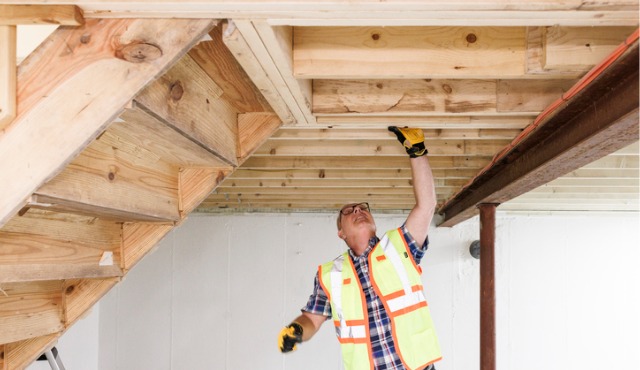Are you planning on finishing your basement?
Finishing a basement is a fantastic way to expand your living space and increase the value of your home. Whether you plan to create a cozy family room, a home theater, a guest suite, or even a home office, a finished basement can be a valuable addition to your property.
However, before you embark on this exciting home improvement project, there are essential factors to consider, with one of the most critical being installing legal egress windows. We will examine all of the essential considerations before finishing a basement.
The Importance of Legal Egress Windows
Before diving into the planning and design aspects of finishing your basement, it’s crucial to address egress window requirements in basements. Egress windows are emergency exits designed to provide safe and easy escape routes in case of a fire or other emergencies.
They are mandatory for all finished basements to ensure the safety of occupants and are governed by specific requirements outlined by building codes. Maximum Real Estate Exposure is an insightful resource, but we will summarize the essential requirements.
Requirements for Egress Windows
Egress window requirements in basements typically include:
- Minimum Size: Egress windows must meet minimum size requirements to allow easy exit and entry. In most areas, the window opening should be at least 5.7 square feet, with a minimum height of 24 inches and a minimum width of 20 inches.
- Maximum Height from Floor: The bottom of the egress window opening should be no more than 44 inches from the finished floor.
- Unobstructed Access: The window well, if present, should provide unobstructed access to the window. It should be at least 36 inches wide and 36 inches in projection. Grates or covers should be easily removable from the inside without special tools.
- Proper Ladder or Steps: If the window well depth exceeds 44 inches, a permanent ladder or steps must be installed to allow easy access.
- Approved Window Type: The window must be hinged, sliding, or of another approved type, allowing a quick and unobstructed exit.
- Adequate Light and Ventilation: The egress window should provide enough natural light and ventilation to the basement. It’s critical to ensure the space is habitable and meets safety standards.
Meeting these egress window requirements is essential for safety and compliance with local building codes. Failure to adhere to these regulations can delay obtaining necessary permits and may lead to costly renovations if the basement does not meet code requirements.
Other Considerations Before Finishing Your Basement
Now that we’ve addressed the critical aspect of egress window requirements, let’s explore other vital considerations before finishing your basement:
Moisture Control
Basements are notorious for being damp and prone to moisture issues. Before finishing the space, addressing any water leakage problems, ensuring proper drainage, and considering waterproofing solutions are essential.
Moisture control prevents mold growth, protects investment, and creates a healthy living environment.
Insulation and HVAC
Proper insulation is vital for maintaining a comfortable temperature in your finished basement. Ensure the insulation is correctly installed to prevent heat loss in winter and heat gain in summer.
Additionally, consider extending your home’s HVAC system to the basement to regulate temperature and humidity effectively.
Speaking with a qualified HVAC technician is essential. When you add significant square footage, you must ensure the heating system is appropriately sized.
Electrical and Plumbing
Plan your electrical and plumbing layouts carefully. Adequate electrical outlets, lighting, and plumbing fixtures are essential for functionality.
Consult with a professional electrician and plumber to ensure compliance with local codes and safety standards.
Permits and Codes
Obtaining the necessary permits and adhering to local building codes are non-negotiable steps in finishing a basement.
Failure to do so can lead to fines and complications when selling your home. Consult your local building department to understand the permitting process and code requirements.
In my experience as a Realtor for the past three decades, I often see people finishing basements without permits. Most do so to avoid paying additional real estate taxes. Others do it out of pure laziness.
It doesn’t matter the reason. It will likely bite you with significant stress when you sell your home. Make sure you pull permits!
One additional essential aspect concerns your septic system. If you add bedrooms to your basement, your local community may require you to upgrade the system.
Design and Layout
Consider the purpose of your finished basement and create a detailed floor plan that optimizes the use of space.
Consider factors such as the location of egress windows, storage options, and any specific design preferences you have. There are many creative options for finishing a basement.
Budget and Contingency
Establish a realistic budget for your basement finishing project, including a contingency fund for unexpected expenses. Basement renovations often uncover unforeseen issues like outdated wiring or structural problems, so it’s wise to be prepared.
The cost of finishing a basement can be significant, depending on what you do. However, it is almost always an addition with a great return on investment.
Many home buyers love having the additional space for multiple uses, whether it is an in-law suite or a place for teenagers to hang out.
You can ask a real estate agent to provide a comparative market analysis with and without. You’ll then have an excellent idea of how much value it has added.
Lighting and Ventilation
Basements can be naturally darker than other parts of your home. Plan for adequate natural and artificial lighting to create an inviting and functional space.
Ensure proper ventilation to prevent stale air and maintain air quality. These are two essential considerations when finishing a basement. Lack of adequate lighting makes for a less desirable space.
Ventilation issues create a moldy smell that nobody will enjoy.
Flooring and Finishes
Select flooring materials that are suitable for basement conditions. Options like vinyl, laminate, and engineered wood are often preferred due to their moisture resistance. Choose finishes that are both durable and aesthetically pleasing.
Final Thoughts
Finishing a basement is a rewarding project that can enhance your home’s living space and value. However, it’s essential to prioritize safety by meeting egress window requirements in basements.
Additionally, consider factors like moisture control, insulation, electrical and plumbing needs, permits and codes, design, budget, lighting, and ventilation to ensure a successful and comfortable basement renovation.
By carefully planning and addressing these considerations, you can transform your basement into a functional and enjoyable space for your family and guests.














